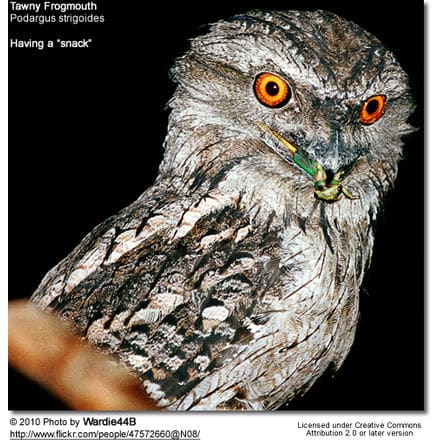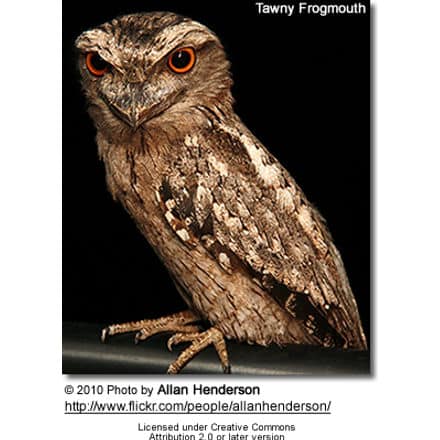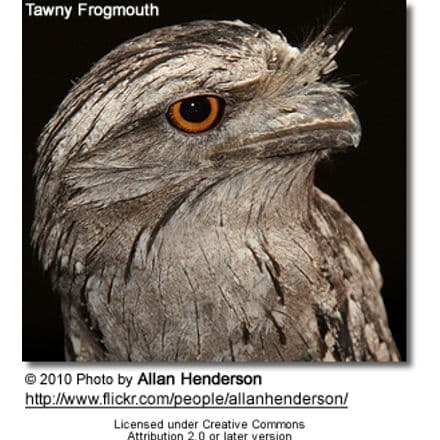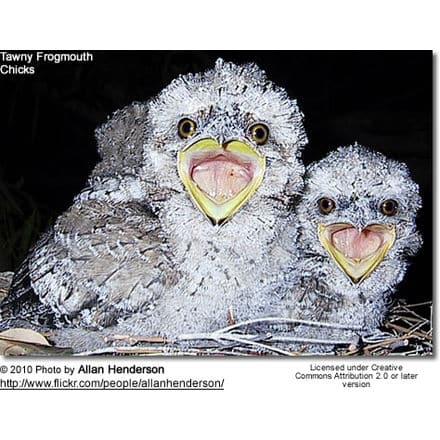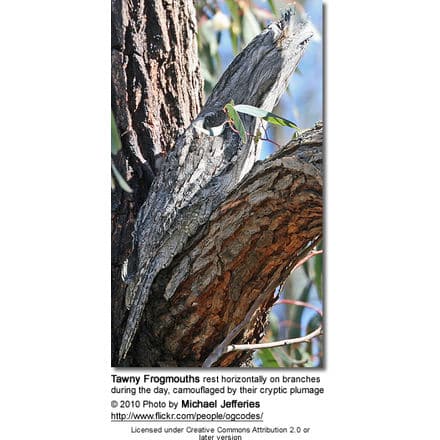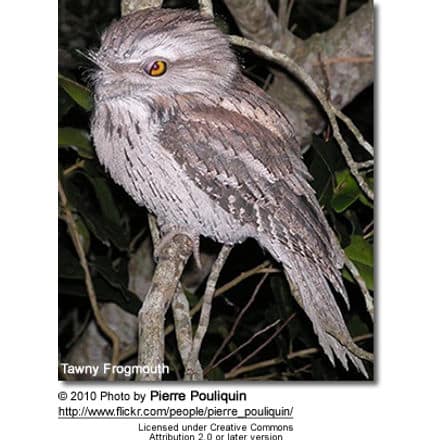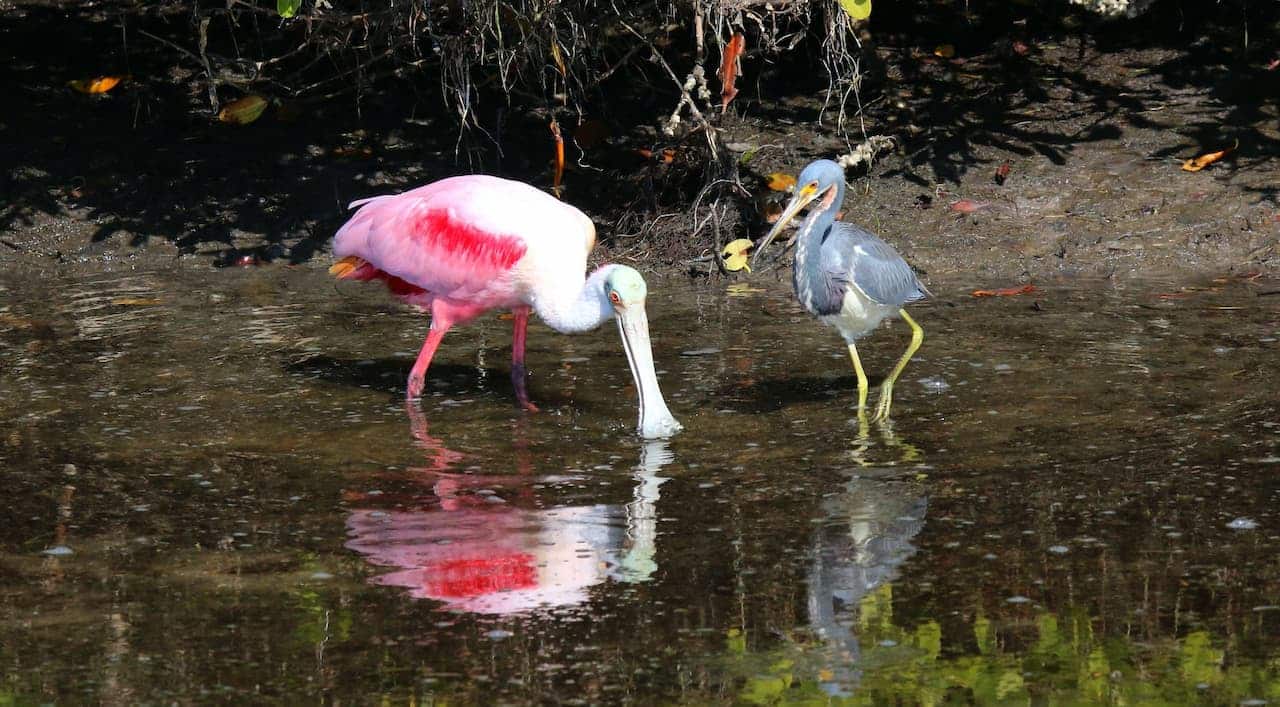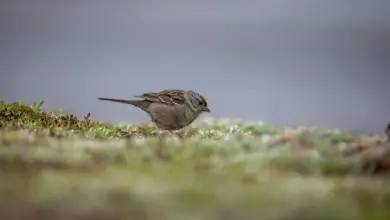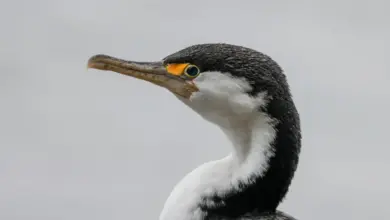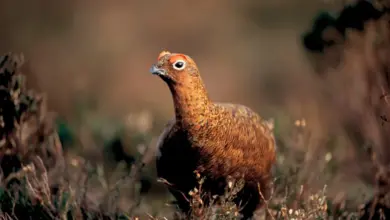Tawny Frogmouths
Frogmouth Information … Frogmouth Species Photo Gallery
The Tawny Frogmouths, Podargus strigoides, is an Australian variety of frogmouth, a type of bird found throughout the Australian mainland, Tasmania and southern New Guinea. Frogmouths have enormous wide frog-like mouths (hence their name).
The Tawny Frogmouths is often thought to be an owl. Many Australians incorrectly refer to the Tawny Frogmouth by the colloquial names of “Mopoke” or “Morepork”, however, these are actually common alternate names for the Southern Boobook Owl. Frogmouths are not raptorial birds.
Tawny Frogmouths Photo Gallery
Description
Males and females look alike and are 35–50 cm long. They have yellow eyes and a wide beak topped with a tuft of bristly feathers. They make loud clacking sounds with their beaks and emit a reverberating booming call.
Tawny Frogmouths hunt at night and spend the day roosting on a dead log or tree branch close to the tree trunk. Their camouflage is excellent — staying very still and upright, they look just like part of the branch.
The Tawny Frogmouths is almost exclusively insectivorous, feeding rarely on frogs and other small prey. They catch their prey with their beaks rather than with their talons, another way in which they are different from owls. Owls fly around at night hunting food, but Tawny Frogmouths generally remain sitting very still on a low perch, and wait for food to come to them. They catch prey with their beaks, and sometimes drop from their perch onto the prey on the ground.
Breeding
Tawny Frogmouths pairs stay together until one of the pair dies. They breed from August to December. They usually use the same nest each year, and must make repairs to their loose, untidy platforms of sticks.
After mating, the female lays two or three eggs onto a lining of green leaves in the nest. Both male and female take turns sitting on the eggs to incubate them until they hatch about 30 days later. Both parents help feed the chicks. About 25 days after hatching, the chicks are ready to leave the nest and lead their own lives.
Defensive behaviour
When feeling threatened, the Tawny Frogmouths stays perfectly still, with eyes almost shut and with bill pointed upwards, relying on camouflage for protection.
Differences from owls
Tawny Frogmouths and owls both have anisodactyl feet – meaning that one toe is facing backwards and the other three face forwards. However, owl’s feet are much stronger than the feet of the Tawny Frogmouth as owls use their feet to catch their prey.
Owls are also able to swing one of their toes around to the back (with a unique flexible joint) to get a better grip on their prey. Tawny Frogmouths have fairly weak feet as they use their beaks to catch their prey.
Owls eat small mammals, like mice and rats, so their bones are shorter and stronger than those of Tawny Frogmouths which usually hunt smaller prey. Tawny Frogmouths typically wait for their prey to come to them, instead of hunting on the wing like owls.
Taxonomy
The Tawny Frogmouths was first described in 1801 by English naturalist John Latham. Is specific name is derived from the Ancient Greek stems strix “owl” and eidos “form”. It belongs to the frogmouth family Podargidae, which also includes the other types of frogmouths like the Jaren and Solomon Islands Frogmouth. Tawny Frogmouths came from Aves (modern birds) then the neoaves, which has such birds like flamingos, cuckoos and the owls, that continued on to Caprimulgiformes, this is the group that includes the nightjars and oilbirds and then onto Podargidae. Podargidae have been around for about 56 million years, since the Eocene period.
Although related to owls, frogmouths are more closely related to nightjars and oilbirds.
Further reading
- Kaplan, Gisela: Tawny Frogmouth, CSIRO Publishing, Collingwood, 2007, ISBN: 9780643092396
Copyright: Wikipedia. This article is licensed under the GNU Free Documentation License. It uses material from the Wikipedia.org. Additional information and photos added by Avianweb.
Please Note: The articles or images on this page are the sole property of the authors or photographers. Please contact them directly with respect to any copyright or licensing questions. Thank you.
The Avianweb strives to maintain accurate and up-to-date information; however, mistakes do happen. If you would like to correct or update any of the information, please send us an e-mail. THANK YOU!

